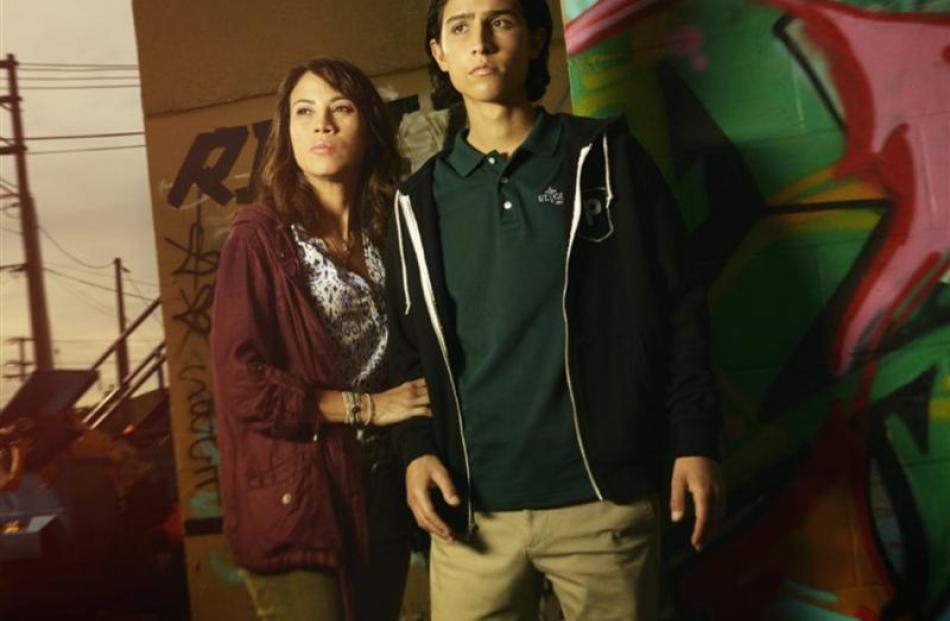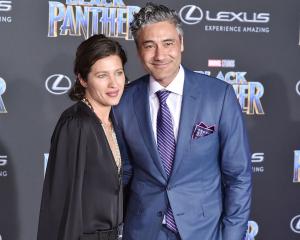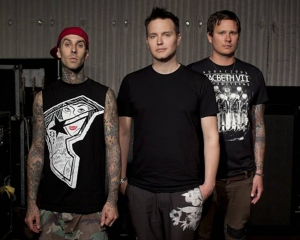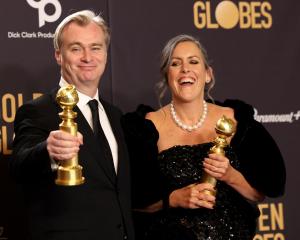New undead horror series "Fear the Walking Dead" may take place in the brief, pre-apocalypse glow of Los Angeles, but don't expect this new walker horde to be made of sun-kissed cheeks in overpriced tank tops shambling down the streets of Beverly Hills.
"The Walking Dead" spinoff hopes to ground its drama in what one of the series' directors calls the "backstage" side of LA.
Realism trumps this sci-fi series, which focuses its lens on the cracks of Los Angeles, the everyday life LA. But now, you know, with zombies.
"There's a tendency for movies and TV shows in Hollywood to be very glamorous and filled with beautiful people, and everything's sparkly and shiny," co-executive producer and director Adam Davidson said over the phone.
"Even the sets look tan. Everybody looks tan."
That's not the LA Davidson knows best.
"I grew up in Los Angeles, and I always felt it was a city very different from the one that I saw commonly portrayed on the screen. ... I saw the trash strewn all over the place. I saw the smog, the thick air. The buildings that looked like they could just blow away in the next Santa Ana wind storm. I love the flaws of LA. It's a fragile place, and that to me was interesting - to tell the story of a world that's already flawed, and all of the sudden zombies come in."
Davidson, who directed the pilot of "Fear" along with the two following episodes, elaborated that setting the series on "the backstage of LA., on the other side of the river" allowed for a more authentic, and new, viewing experience.
It's also the director's hope that showing this often-overlooked reality will make the series' undead reveal easier for audiences to swallow.
This idea of grounding "Fear" in an ugly-but-beautiful LA reality is how this pilot will stand apart from the cinematic spectacle that was the much-loved, Frank Darabont-directed premiere episode in 2010 of "The Walking Dead."
When asked how he geared up to shoot a companion-series pilot in the shadow of "Walking Dead's" previous pilot success, Davidson stated plainly that "Fear" had to stand on its own two feet.
Which explains why the studio purposely looked for writers and directors who hadn't previously worked on "The Walking Dead" series.
The possibility of directing an episode of "Walking Dead" had floated by Davidson, but because of scheduling conflicts it never worked out.
"Ironically I'm thankful that it didn't because it made me eligible to do 'Fear,'" Davidson said.
Instead of following a group of post-apocalyptic survivors, made up of strangers seeking refuge from the walker-filled Georgia woods, "Fear" is centered on a family towing their own pre-existing drama.
Kim Dickens plays Madison Clark, a high school guidance counsellor, single mother and fiance to Travis Manama (portrayed by Cliff Curtis), who also has kids of his own and an ex-wife across town.
The family is the audience's gateway into the beginning of the outbreak and slow burn of attacking "infected," the term "Fear" has given to its undead.
"Walking Dead" has walkers, and "Fear" has infected. Just another attempt to put a realistic spin on how this series will be tackling an actual infection that turns human beings into reanimated corpses hungry for flesh. Don't call them zombies ... yet.
Setting the series in areas where real families live and work lends itself to additional drama. What do you do when an undead outbreak is sweeping through town and you're separated from your loved ones by freeways, hills and (more likely) gobs of bumper-kissing traffic?
"These hills filled with houses stacked and pushed together, hopefully in the audience's subconscious you're always remembering that this is a city filled with people," Davidson said.
"If this is happening to these people, it's got to be happening to other people all across the city. You get isolated. With these neighborhoods, it's not like you're connected very easily to other people. The hills separate you."
The series' look into the darker corners of LA extends to the tone of "Fear" as well. No sunshine and lollipops for the characters, one of whom is a drug addict who uncovers one of the first "infected" while coming down inside a trash-covered flop house.
"There's this common approach when you're shooting Los Angeles where everything is bright and sunny, you eliminate all the shadows," Davidson said.
"And I thought, well, actually when you live in LA you retreat from the sunlight. You're constantly pulling the shades down, closing the blinds and sitting in the shade and the shadows. I wanted to embrace the shadows in this world, because it's all about what you can't see. There's this impending shadow looming over the city that's growing. And people aren't even aware of it."













